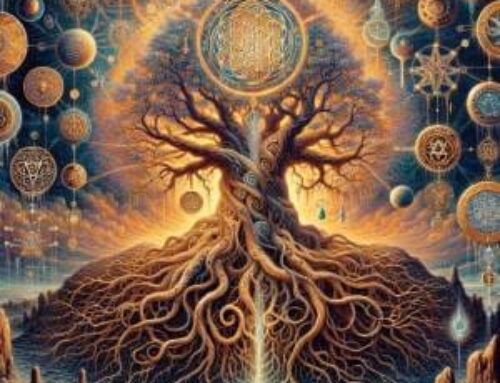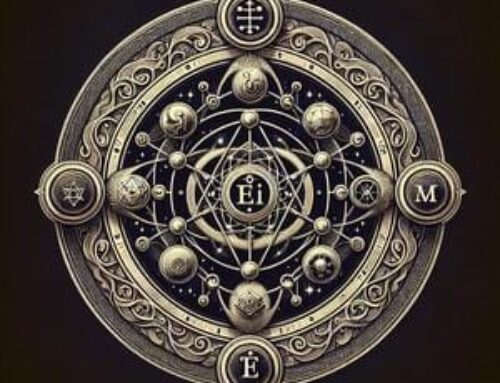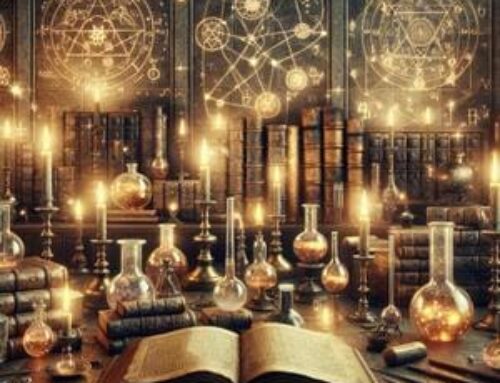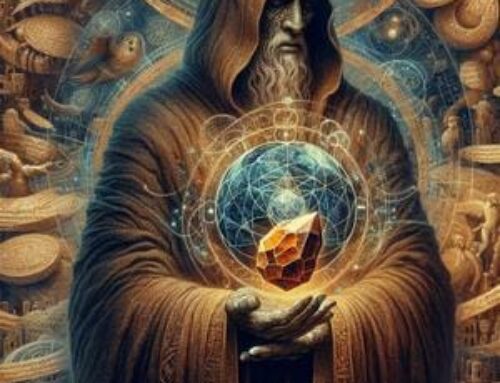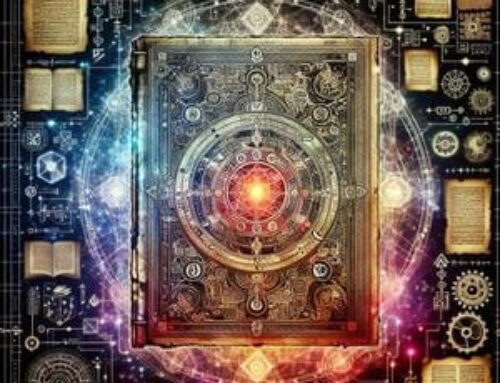Contents
Introduction to “Alchemy Symbols”
Understanding the enigmatic world of alchemy symbols is akin to decoding an ancient and mystical language – one that intertwines the material with the spiritual. These symbols are not mere decorative images; they are profound representations of alchemical processes, elements, and philosophical tenets, each imbued with layers of meaning and historical significance.
A Primer on Alchemy Symbols
Ancient religious symbols in Egypt, Greece, and Rome are associated with nature, mystical images, and ancestral spirits, and their meaning has evolved over time (1).
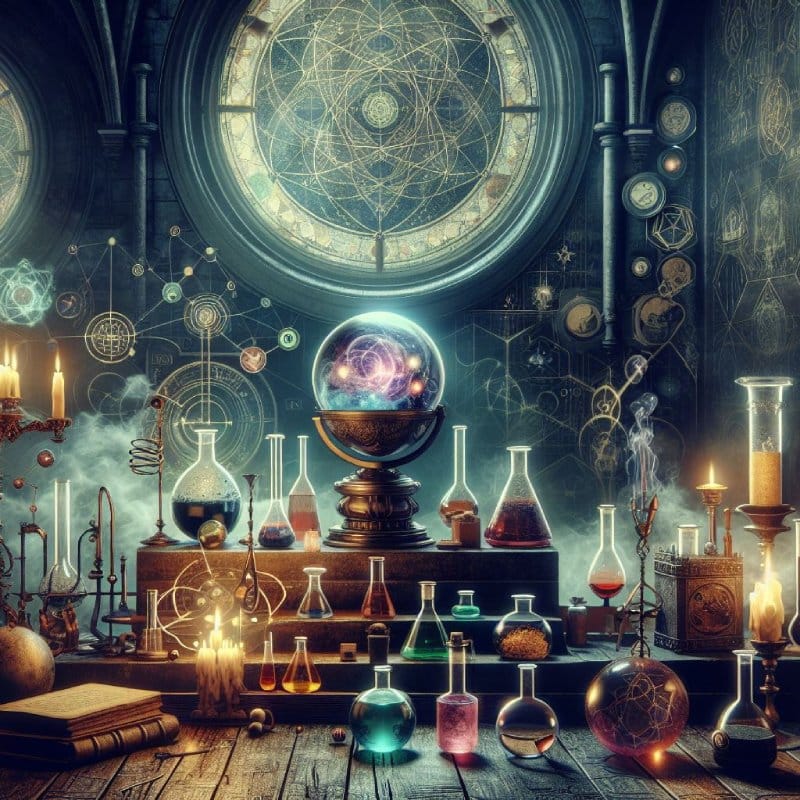
Alchemy symbols transcend simple imagery, acting as a profound lexicon for the processes and philosophies inherent in alchemy. This coded language was used by alchemists to document experiments and esoteric insights, merging science, mysticism, and philosophy into a complex tapestry of knowledge. The symbols encapsulate ideas about the transformation of both matter and spirit, providing a bridge between the physical and the metaphysical realms.
The Tria Prima: Sulphur, Mercury, and Salt
Alchemy rests on the foundation of three primary substances, known as the Tria Prima: Sulphur, Mercury, and Salt (2). These were first detailed by the Persian alchemist Jabir ibn Hayyan and represent the core elements in alchemical practice.
Sulphur: The Spirit of Matter
Sulphur, associated with the color red, the planet Mars, and the masculine principle, embodies fire, change, and passion. It signifies the will, energy, and divine spark within the human soul, essential for alchemical transformation and enlightenment. Sulphur represents the dynamic and transformative spirit that ignites the alchemical process.
Mercury: The Consciousness of Matter
Mercury, or Mercurius, is linked with the color white, the planet Mercury, and the hermaphroditic principle. Symbolizing fluidity, purity, and harmony, Mercury integrates and refines substances, playing a central role in creating the Philosopher’s Stone. It represents the consciousness and transformative power that unites opposites within the alchemical tradition.
Salt: The Body of Matter
Salt, connected to the color black, the planet Saturn, and the feminine principle, stands for the physical form of matter. It embodies stability, hardness, and inertia, grounding and stabilizing the other elements. Salt purifies and clarifies matter, preparing it for higher stages of transformation and serving as the binding agent for Sulphur and Mercury.
The Four Elements: Earth, Air, Water, and Fire
Central to alchemical theory are the four classical elements—Earth, Air, Water, and Fire. Each represents different stages and processes of transformation.
Earth: Materiality and Stability
Earth symbolizes solidity and materiality, corresponding to the physical body. It represents stability and nourishment, being both the starting and ending point of transformation. In alchemy, grounding spiritual practices in the material world is crucial, with Earth serving as a stabilizing force.
Air: Intellect and Communication
Air represents the breath of life, intellect, and movement. It is associated with the mental faculties and the capacity for communication. Alchemically, Air is vital for the activation and refinement of substances, facilitating the purification and transformation necessary for alchemical processes.
Water: Purification and Fluidity
Water, connected to the subconscious and emotional realms, stands for purification and fluidity. It dissolves and recombines substances, a crucial process in creating the elixir of life. Water’s role in alchemy is pivotal, symbolizing the emotional and subconscious currents that drive transformation.
Fire: Energy and Transformation
Fire embodies heat, energy, and the transformative principle. It is essential for the purification and refinement of substances, driving processes like calcination and sublimation. Fire represents desire and the alchemical power that fuels transformation, acting as a catalyst for change and enlightenment.
Alchemy symbols serve as a bridge between the seen and unseen, the material and the spiritual. They encapsulate profound philosophical concepts and alchemical processes, providing insight into the hidden forces of nature and the universe. By understanding these symbols, one can gain a deeper appreciation of the rich esoteric traditions that have shaped alchemical thought throughout history.
A Confluence of Zodiac and Matter
Alchemy is a complex philosophical system that aims to understand creation and life, with transmutation of metals being a secondary goal (3).
The elusive twelve stages of alchemy, resonating with the zodiac signs, herald the metamorphosis of base matter into the illustrious Philosopher’s Stone. Beyond mere physicality, these stages weave a tapestry of spiritual evolution.
Calcination:
Here, the dance of flames and ashes ensues. One witnesses the relentless blaze reducing substances to their core essence. Aries stands as its celestial counterpart – an initiator, breaking down to reveal inner truths.
Congelation:
Liquid stillness morphs into crystalline solidity. Taurus, with its grounding stability, symbolizes this act of freezing liquid matter into a solid form. Purity emerges from the stasis.
Sublimation:
Ah, the leap from solid to gas, bypassing the liquid interlude. This stage aligns with Libra, suggesting refinement – matter ascends to loftier planes, shunning intermediaries.
Putrefaction:
Decay, disintegration, the cycle of death into rebirth – Scorpio presides over this transformative stage. The breakdown to elemental essence is the alchemist’s meditation on mortality and renewal.
In the grand narrative of alchemy, each stage invites the alchemist to traverse the confluence of the material and spiritual realms, shedding impurities, stabilizing, elevating, and ultimately renewing.
Conclusion:
Symbols, with their profound wisdom, guide us through these transformative processes. Alchemical symbols serve as the bridge between the physical and the spiritual, offering insights and illuminating the path toward enlightenment. The Hermetic Academy beckons seekers to delve into these esoteric traditions, to unlock the arcane secrets of alchemy, and to catalyze personal transformation.
FAQ- Alchemy Symbols
1. What are the primary alchemical symbols?
A: Sulphur, Mercury, and Salt – these are the pillars. They represent the spirit, consciousness, and the very body of matter.
2. How do the four elements relate to alchemy?
A: Earth, Air, Water, Fire – elemental forces that chart the course of transformation, each symbolizing a crucial stage in the pursuit of the Philosopher’s Stone.
3. The twelve stages – why do they matter?
A: Each stage, tethered to a zodiac sign, maps out both physical and spiritual transmutations. It’s a journey from the mundane to the sublime.
4. Practical applications of alchemical symbols?
A: These symbols aren’t just theoretical; they guide both laboratory experiments and spiritual journeys, a compass for the Great Work.
5. Where does one seek further knowledge?
A: Dive into the Hermetic Academy’s wealth of resources. Courses and materials await those eager to explore alchemical wisdom and its spiritual applications.
To truly grasp the heart of alchemy, immerse yourself in its symbols and stages, for therein lies the key to transformation and enlightenment.
References
(1) Alimkulov, E. (2020). ANCIENT BELIEFS AND THEIR RELIGIOUS AND MYSTICAL SYMBOLS. The Light of Islam. https://doi.org/10.47980/tloi/2020/4/2.
(2) Rubenstein, E. (2023). Alchemy: Secrets of Consciousness Transformation. Hermetic World, Paphos.
(3) Read, J. (1933). Alchemy and Alchemists. Nature, 168, 759-762. https://doi.org/10.1038/SCIENTIFICAMERICAN1052-72.

